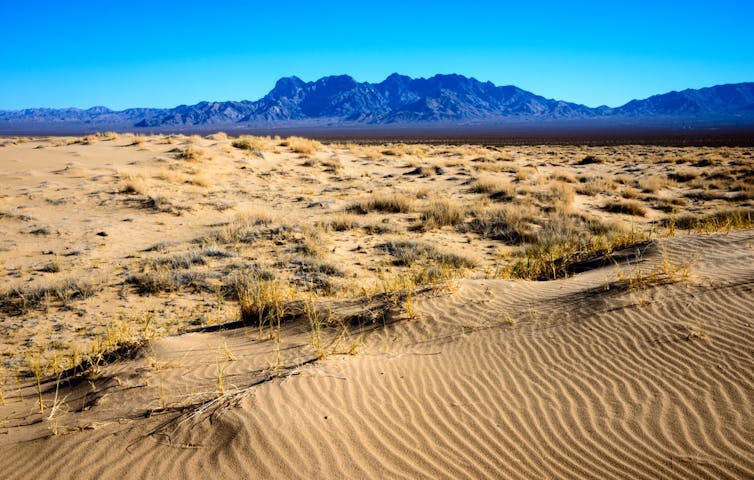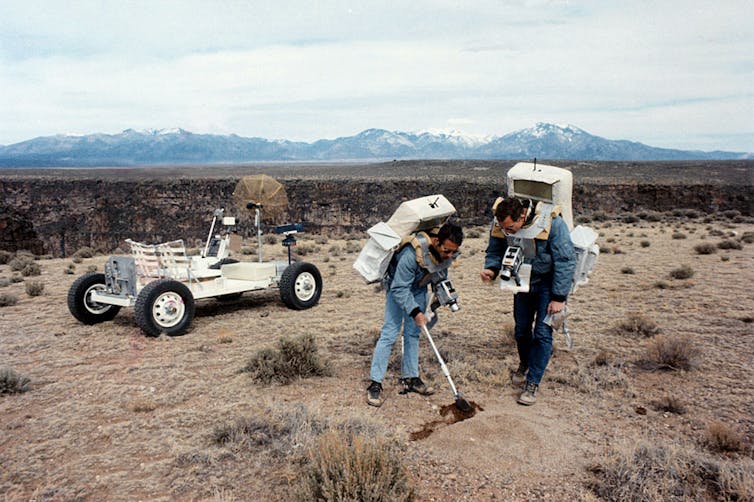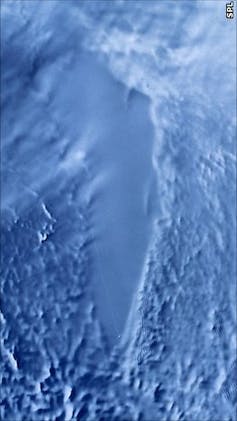When I was a college student, I worked at the Charlevoix Astronomical Observatory in Québec.
It was a pretty decent summer job, as I got to observe celestial bodies until the dead of night, talk to astronomy buffs about space exploration and watch children be amazed by Saturn’s rings.
Over the dozens of astronomy nights I’ve hosted, one question has consistently come up:
“Does life exist anywhere else?”
Answering this fundamental question, articulated by the first philosophers, which has transcended time and eras and still remains at the heart of our rational thinking, was a big assignment for me as a CEGEP student at the time.
I merely offered a simple “most likely,” before adding a surprising “and if that’s the case, the answer lies here, on Earth, in places called ‘planetary analogues.’”
Planetary analogues are locations on Earth that replicate one or more extreme conditions found on another celestial body. For example, temperature, pressure and solar radiation.
Both for technical and financial reasons, carrying out several space missions per year, manned or unmanned, is simply not realistic, especially as these missions take several years to complete.
Yet the Earth, our magnificent blue planet where life thrives, has some extreme, dangerous and cruel places. These places can reproduce certain conditions found in the arid deserts of Mars or the suffocating atmosphere of Venus.
What if these places were, in fact, habitats where life has developed?
Lakes under ice
For example, consider Europa, one of the moons of Jupiter, which, along with Mars, is one of the top contenders in our quest for extraterrestrial life. Its surface is covered in a dense layer of ice about ten kilometres thick, beneath which lies… an ocean. An ocean of… liquid water!
It turns out that in Antarctica, almost 400 lakes exist in similar conditions, that is to say that they lie below a permanent ice blanket, protected from everything that happens on the surface. These are known as “subglacial” lakes.
Such is the case of Lake Vostok, the largest and deepest lake in Antarctica. It was in the 1960s that scientists first suspected the presence of a lake beneath a four-kilometre thick layer of ice.
This icy barrier deprives the lake of gaseous exchanges with the atmosphere or exposure to solar radiation, making it a permanently dark place that is poor in nutrients and subject to enormous pressure — not very hospitable.
However, the water at the surface of the lake is concentrated in oxygen, the key chemical element for living metabolism.
Wikimedia
A love for extreme conditions
In 2008, analyses of the ice covering Lake Vostok revealed the presence of micro-organisms! This essentially means that life can indeed adapt to hostile environments that would otherwise be fatal for most organisms. These super-organisms, or “extremophile,” are able to tolerate these extreme conditions.
As a result, the waters of Lake Vostok, isolated from the Earth’s surface for millions of years, could well contain life too — an ideal planetary analogue.
Studying Lake Vostok, and its possible extremophile life forms, is almost like being on Jupiter’s moon Europa. And it’s almost like studying its ocean. Were Lake Vostok able to develop life, why not the ocean on Europa as well?
Subglacial lakes such as Vostok are just one example of the dozens of planetary analogue sites that have been identified. For example, in order to study certain Martian craters, the Earth’s deserts are the perfect playgrounds. Scientists are exploring the Mojave (United States), Atacama (Chile) and Namib (Africa) deserts, which are dry and arid. Their soil also contains extremophiles, the study of which tells us about the development of life in hot environments where water is limited.

(Shutterstock)
Preparing for space missions on Earth
As well as providing a better understanding of life and its emergence, investigating planetary analogues has another advantage: preparing and simulating space missions.
Just think — if we’re developing a new technology to sample a rock on Mars, it would be wise to try it out first, wouldn’t it? And not just inside NASA studios, where the parameters are controlled. We must step out and go to remote, uncomfortable regions.
That’s what the Apollo astronauts of the 50s and 60s did (those who aimed for the moon). They went to meteorite impact craters, volcanoes, deserts, all over the Earth, for months on end. All so they could practice their techniques with a variety of adapted tools, all slowed down by their space suits.

(Analogs for Planetary Exploration [2011])
It all begins on Earth
Space exploration and the understanding of our solar system begin on Earth. At first glance, this idea may seem counter-intuitive, but it actually makes a lot of sense when you consider the remote, almost inaccessible and extreme environments our planet contains.
Astrochemistry and astrobiology have emerged in this same way, as multidisciplinary fields that equip us for our research into the evolution of Earth and life.
Now, if I were asked the question — “Does life exist anywhere else?” — I, still naive, but starting my PhD in the chemistry of extreme polar environments, would answer:
Ask me again in five years!
Joking aside, analogues have their limitations in that the conditions can never be recreated in their entirety. As a result, scientists need to be cautious in their approach and avoid jumping to hasty conclusions.
Life in Lake Vostok is not synonymous with life on Europa, far from it. But let’s just say that it’s an excellent first step that will guide us considerably in our future missions.




